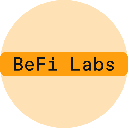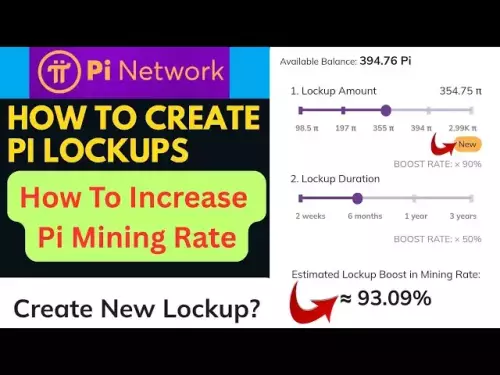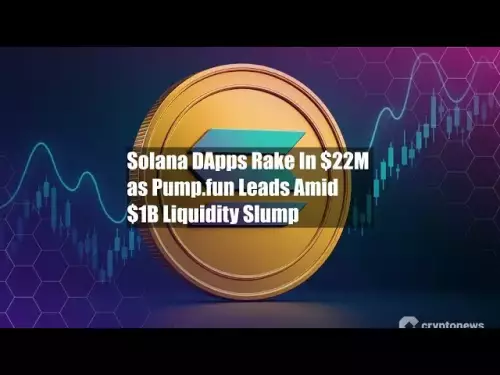-
 bitcoin
bitcoin $114779.865156 USD
2.30% -
 ethereum
ethereum $4226.519789 USD
2.39% -
 tether
tether $1.000545 USD
0.04% -
 xrp
xrp $2.890223 USD
0.92% -
 bnb
bnb $1030.029301 USD
2.95% -
 solana
solana $212.824944 USD
1.69% -
 usd-coin
usd-coin $0.999757 USD
0.01% -
 dogecoin
dogecoin $0.234961 USD
-0.27% -
 tron
tron $0.337174 USD
0.42% -
 cardano
cardano $0.804783 USD
0.09% -
 hyperliquid
hyperliquid $45.748770 USD
-2.85% -
 chainlink
chainlink $21.699170 USD
0.82% -
 ethena-usde
ethena-usde $1.001452 USD
0.08% -
 avalanche
avalanche $30.237800 USD
1.14% -
 stellar
stellar $0.372604 USD
1.52%
What are the core methods of making money with Web3?
Web3 offers income through staking, yield farming, DeFi lending/borrowing, NFTs, DAOs, and play-to-earn games, leveraging blockchain technology.
Jun 09, 2025 at 08:15 am
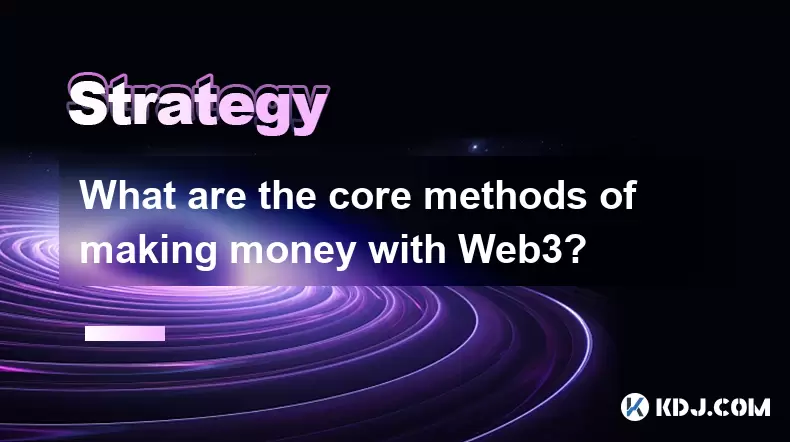
Web3, often referred to as the decentralized web, has introduced a myriad of new ways for individuals to generate income. Unlike traditional web platforms, Web3 leverages blockchain technology, smart contracts, and decentralized applications (dApps) to create a new ecosystem where users can participate in various economic activities. In this article, we will explore the core methods of making money with Web3, providing detailed insights into each approach.
Staking and Yield Farming
One of the most popular methods of making money in the Web3 space is through staking and yield farming. These methods allow users to earn passive income by locking up their cryptocurrencies in a blockchain network or a decentralized finance (DeFi) platform.
Staking involves holding funds in a cryptocurrency wallet to support the operations of a blockchain network. In return, users receive rewards in the form of additional tokens. For instance, staking Ethereum (ETH) on the Ethereum 2.0 network can yield annual returns ranging from 4% to 10%, depending on the amount staked and the duration.
Yield farming, on the other hand, is a more complex process that involves lending or providing liquidity to DeFi platforms. Users can earn returns in the form of interest or additional tokens. For example, providing liquidity to a decentralized exchange (DEX) like Uniswap can yield returns through trading fees and liquidity provider (LP) tokens.
Decentralized Finance (DeFi) Lending and Borrowing
DeFi lending and borrowing is another lucrative avenue in the Web3 ecosystem. Platforms like Aave, Compound, and MakerDAO allow users to lend their cryptocurrencies and earn interest or borrow assets against collateral.
To start lending on a DeFi platform, users need to deposit their cryptocurrencies into the platform's smart contract. The interest rates are determined by supply and demand dynamics within the platform. For example, lending DAI on Compound might yield an annual percentage yield (APY) of around 2% to 5%.
Borrowing on DeFi platforms involves depositing collateral, usually in the form of other cryptocurrencies, and then taking out a loan in a different asset. The loan can be used for various purposes, such as trading or investing. The interest rates for borrowing are also influenced by market conditions. For instance, borrowing ETH on Aave might incur an annual percentage rate (APR) of 2% to 10%, depending on the collateral and the loan amount.
Non-Fungible Tokens (NFTs)
Non-Fungible Tokens (NFTs) have emerged as a significant part of the Web3 economy, allowing creators and collectors to monetize digital assets. NFTs are unique digital tokens that represent ownership of a specific item or piece of content, such as art, music, or virtual real estate.
Creating and selling NFTs can be a profitable venture for artists and content creators. Platforms like OpenSea, Rarible, and Foundation enable users to mint and list their NFTs for sale. The process involves creating the digital asset, minting it as an NFT on a blockchain like Ethereum, and then listing it on a marketplace. The creator can set a fixed price or opt for an auction format.
Collecting and trading NFTs is another way to make money in the Web3 space. Collectors can buy NFTs at a lower price and sell them at a higher price as the value appreciates. For example, purchasing a rare digital artwork NFT for 1 ETH and selling it later for 5 ETH can result in a significant profit.
Decentralized Autonomous Organizations (DAOs)
Decentralized Autonomous Organizations (DAOs) are another innovative way to generate income in the Web3 ecosystem. DAOs are organizations governed by smart contracts and operated by community members who hold governance tokens.
Participating in DAOs can be rewarding as members can vote on proposals and decisions that affect the organization's direction and operations. Holding governance tokens can also entitle members to a share of the DAO's profits or rewards. For instance, being a member of a successful investment DAO like Yearn Finance can yield returns through the DAO's investment strategies.
Creating and managing a DAO can also be a profitable endeavor. By setting up a DAO and attracting members, founders can benefit from the organization's success and the value of its governance tokens. The process involves defining the DAO's purpose, creating the smart contracts, and launching the governance tokens.
Gaming and Play-to-Earn Models
Gaming and play-to-earn models have become a popular way to make money in the Web3 space. These models allow players to earn cryptocurrencies or NFTs by participating in blockchain-based games.
Playing blockchain games can be a fun and rewarding way to earn income. Games like Axie Infinity and Decentraland allow players to earn tokens by completing tasks, winning battles, or participating in the game's economy. For example, playing Axie Infinity and earning Smooth Love Potion (SLP) tokens can be converted into other cryptocurrencies and withdrawn.
Developing and selling in-game assets is another way to profit from blockchain games. Players can create and sell unique in-game items as NFTs, which can be traded on marketplaces like OpenSea. For instance, creating and selling a rare virtual land plot in Decentraland can yield significant returns if the demand for virtual real estate increases.
Frequently Asked Questions
Q1: Can I make money with Web3 without investing a lot of capital?Yes, it is possible to make money with Web3 without a large initial investment. For example, participating in play-to-earn games or contributing to DAOs can start with minimal capital. However, the potential returns may be lower compared to methods that require more significant investments.
Q2: Are there risks involved in making money with Web3?Yes, there are risks associated with making money in the Web3 ecosystem. These include market volatility, smart contract vulnerabilities, and potential regulatory changes. It's important to conduct thorough research and understand the risks before participating in any Web3 activity.
Q3: How can I ensure the security of my assets in Web3?To ensure the security of your assets in Web3, it's crucial to use reputable wallets and platforms, enable two-factor authentication, and keep your private keys secure. Regularly updating software and being cautious of phishing attempts can also help protect your assets.
Q4: Can I participate in Web3 activities anonymously?Yes, it is possible to participate in Web3 activities anonymously to some extent. Using decentralized platforms and non-custodial wallets can help maintain privacy. However, some activities, such as participating in DAOs or trading on certain platforms, may require identity verification depending on the jurisdiction and platform policies.
Disclaimer:info@kdj.com
The information provided is not trading advice. kdj.com does not assume any responsibility for any investments made based on the information provided in this article. Cryptocurrencies are highly volatile and it is highly recommended that you invest with caution after thorough research!
If you believe that the content used on this website infringes your copyright, please contact us immediately (info@kdj.com) and we will delete it promptly.
- AI Training's Energy Crisis: Can Decentralization with Greg Osuri Offer a Solution?
- 2025-09-30 20:45:14
- Prenetics, Danny Yeung, and Token 2049: A Bold Bitcoin Strategy
- 2025-09-30 20:45:14
- ChatGPT, Bitcoin, and $HYPER: Riding the Crypto Wave
- 2025-09-30 16:25:14
- Mutuum Finance (MUTM): Riding the DeFi Wave with Crypto Price Prediction
- 2025-09-30 16:25:14
- XRP ETF Approval Odds Soar: Analyst Predicts $33 Price Surge!
- 2025-09-30 16:30:01
- Keel, Solana, and Sky Stablecoin: Fueling the Future of DeFi
- 2025-09-30 16:45:13
Related knowledge

Practical parameter settings for a Bitcoin multi-timeframe moving average system
Sep 18,2025 at 10:54pm
Optimizing Timeframe Combinations for Bitcoin Trading1. Selecting appropriate timeframes is crucial when building a multi-timeframe moving average sys...
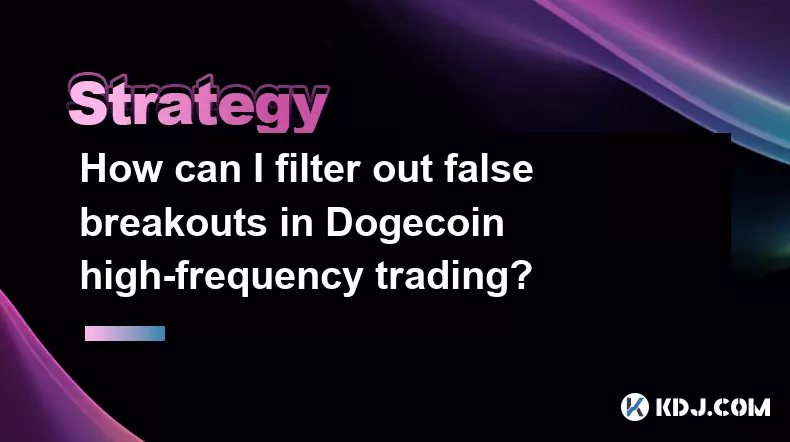
How can I filter out false breakouts in Dogecoin high-frequency trading?
Sep 22,2025 at 01:00am
Understanding False Breakouts in Dogecoin Trading1. A false breakout occurs when Dogecoin's price appears to move beyond a defined support or resistan...

Techniques for identifying tops and bottoms in the Bitcoin on-chain NVT model
Sep 20,2025 at 07:54pm
Understanding the NVT Model in Bitcoin Analysis1. The Network Value to Transactions (NVT) ratio is often described as the 'P/E ratio' of the cryptocur...

What does the surge in open interest in Bitcoincoin futures mean?
Sep 20,2025 at 11:18pm
Understanding the Surge in Dogecoin Futures Open Interest1. A surge in open interest within Dogecoin futures indicates a growing number of active cont...

How can I use the Ethereum USDT premium to gauge market sentiment?
Sep 18,2025 at 11:55pm
Understanding the Ethereum USDT Premium1. The Ethereum USDT premium refers to the price difference between USDT (Tether) traded on Ethereum-based plat...

What should I do if Ethereum staking yields decline?
Sep 20,2025 at 06:18am
Understanding the Causes Behind Declining Ethereum Staking Yields1. The Ethereum network transitioned to a proof-of-stake consensus mechanism with the...

Practical parameter settings for a Bitcoin multi-timeframe moving average system
Sep 18,2025 at 10:54pm
Optimizing Timeframe Combinations for Bitcoin Trading1. Selecting appropriate timeframes is crucial when building a multi-timeframe moving average sys...

How can I filter out false breakouts in Dogecoin high-frequency trading?
Sep 22,2025 at 01:00am
Understanding False Breakouts in Dogecoin Trading1. A false breakout occurs when Dogecoin's price appears to move beyond a defined support or resistan...

Techniques for identifying tops and bottoms in the Bitcoin on-chain NVT model
Sep 20,2025 at 07:54pm
Understanding the NVT Model in Bitcoin Analysis1. The Network Value to Transactions (NVT) ratio is often described as the 'P/E ratio' of the cryptocur...

What does the surge in open interest in Bitcoincoin futures mean?
Sep 20,2025 at 11:18pm
Understanding the Surge in Dogecoin Futures Open Interest1. A surge in open interest within Dogecoin futures indicates a growing number of active cont...

How can I use the Ethereum USDT premium to gauge market sentiment?
Sep 18,2025 at 11:55pm
Understanding the Ethereum USDT Premium1. The Ethereum USDT premium refers to the price difference between USDT (Tether) traded on Ethereum-based plat...

What should I do if Ethereum staking yields decline?
Sep 20,2025 at 06:18am
Understanding the Causes Behind Declining Ethereum Staking Yields1. The Ethereum network transitioned to a proof-of-stake consensus mechanism with the...
See all articles

















